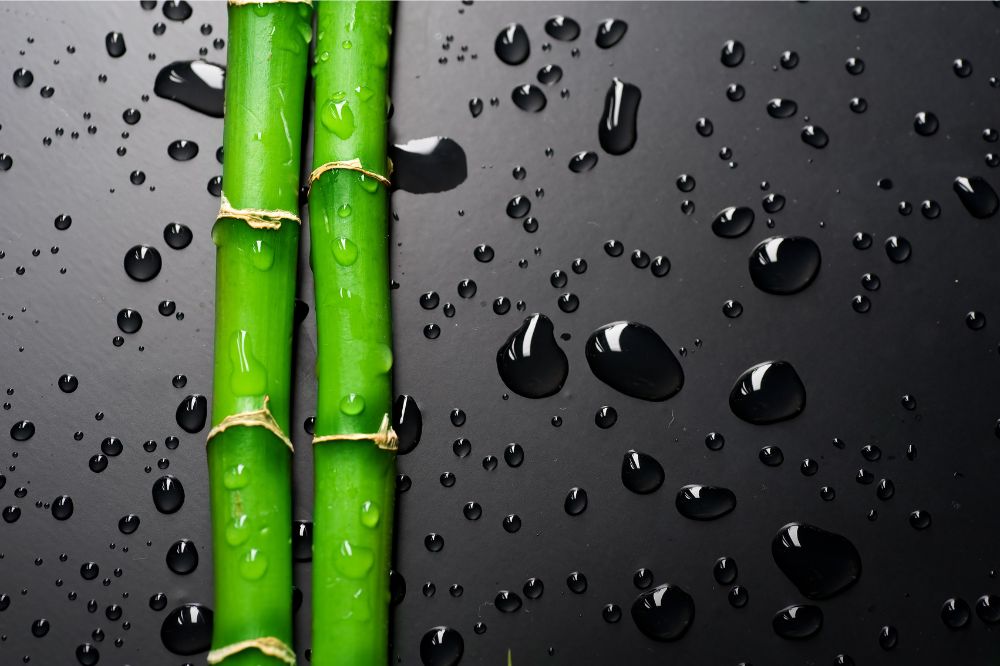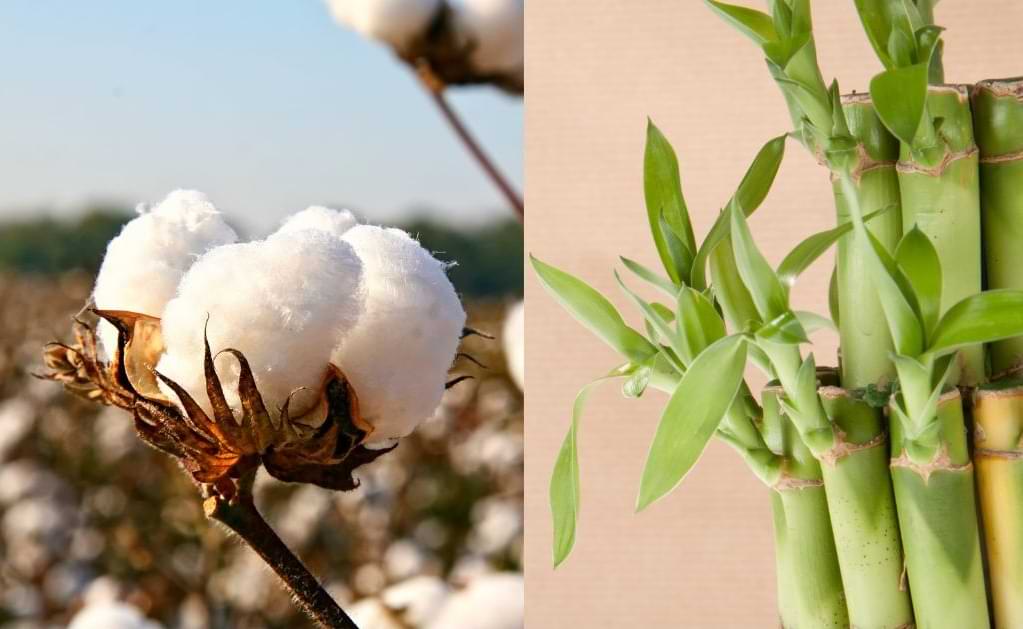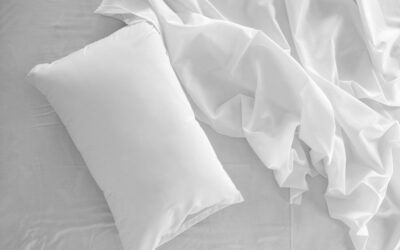As eco-consciousness continues to grow, many of us are looking for ways to make our everyday choices more sustainable. One area where this has become particularly relevant is in the world of textiles – and specifically when it comes to choosing between bamboo and cotton.
While both materials have their benefits, they also come with unique ecological considerations that can impact sustainability.
So which one should you choose?
In this article, we’ll explore the pros and cons of each material so you can make an informed decision about what’s best for your wardrobe (and the planet).
The Environmental Impact Of Textile Production
Are you tired of wearing clothes that are bad for the environment? Then it’s time to consider the environmental impact of textile production. Water usage, chemical pollution, carbon emissions, and land use all contribute to this industry’s negative effects on our planet.
Let’s start with water usage. The amount of water needed to grow cotton is astronomical compared to bamboo. Cotton requires about 2,700 litres per t-shirt while bamboo only needs 200-300 litres per shirt. That means by choosing bamboo over cotton clothing items, we can save a significant amount of water!
Now let’s talk about chemical pollution. Cotton is one of the most chemically intensive crops in the world due to its susceptibility to pests and disease. These chemicals not only hurt wildlife but also seep into local communities’ drinking water sources.
In contrast, bamboo doesn’t require pesticides or fertilizers because it grows so quickly and naturally repels bugs! So why wouldn’t we want to switch to bamboo-based textiles?
The Benefits Of Bamboo As A Material
Bamboo is an incredibly versatile material that has been used for many different purposes throughout history. Recently, it has gained popularity as a sustainable alternative to traditional materials like cotton.
One of the biggest benefits of bamboo is its ability to grow quickly and abundantly without the need for pesticides or fertilizers. Bamboo clothing is becoming more popular due to its soft texture and moisture-wicking properties, making it perfect for athletic wear. Additionally, bamboo home goods are gaining traction in the market as consumers become more conscious about sustainability. Bamboo plates, utensils, and even furniture are all eco-friendly options that can be easily incorporated into any household.
Another benefit of using bamboo is its durability. It can withstand wear and tear much better than cotton, which means products made from bamboo will last longer and ultimately reduce waste. Not only is bamboo good for the environment, but it’s also good for your wallet in the long run.
By choosing bamboo over traditional materials like cotton, we can make a small but significant impact on reducing our carbon footprint. With so many practical applications and benefits, there’s no reason why we shouldn’t explore this innovative material further.
The Benefits Of Cotton As A Material
Cotton is a great material because it’s breathable and durable.
It’s also a natural and sustainable fiber, so it’s better for the environment than synthetic materials.
Compared to bamboo, it’s more breathable and durable, making it a better choice for those looking for a more eco-friendly material.
Let’s discuss the breathability and durability of cotton and how it compares to bamboo.

Breathability
When it comes to the benefits of cotton as a material, breathability is one of its advantages. Cotton fabrics are known for their ability to allow air circulation and moisture absorption, making them comfortable to wear even in hot weather conditions. However, this advantage may also come with some disadvantages.
The impact of breathability on the comfort level and durability of fabrics cannot be ignored. While cotton may feel soft and breathable at first, it tends to lose its shape over time due to repeated washing or exposure to heat. This can affect its overall quality and lifespan, leading to frequent replacements which could have an environmental impact.
In comparison, bamboo fabric has been found to have better breathability than cotton while also being more durable. It maintains its shape even after multiple washes and retains its natural softness without pilling.
Therefore, when considering eco-friendliness in terms of breathability, bamboo seems like a better option compared to cotton.
Durability
Now that we have discussed the impact of breathability on fabrics, let’s move on to another important factor: durability. Longevity is a crucial aspect when it comes to determining the overall eco-friendliness of materials.
Cotton has been known for its softness and comfort but how does it fare in terms of wear and tear?
While cotton may feel luxurious at first, it tends to lose its shape over time due to repeated washing or exposure to heat. This can lead to frequent replacements which could have an environmental impact as well as cost implications.
On the other hand, bamboo fabric has been found to be more durable than cotton. It maintains its shape even after multiple washes and retains its natural softness without pilling.
When comparing maintenance vs replacement, bamboo seems like a better option compared to cotton. With fewer replacements needed, this means less waste generated and resources used in production.
Thus, if you are looking for a material with long-lasting qualities while also considering eco-friendliness, bamboo should be high on your list of options.
The Drawbacks Of Bamboo As A Material
When people think of bamboo, they often imagine a tall and sturdy plant that can withstand harsh weather conditions. However, when it comes to using bamboo as a material for clothing or home decor, there are several drawbacks to consider.

Firstly, despite being marketed as an eco-friendly alternative to cotton, the process of turning bamboo into fabric requires significant amounts of chemicals like sodium hydroxide and carbon disulfide. These chemicals not only harm the environment but also pose health risks to workers in factories.
Secondly, while bamboo is known for its quick growth rate compared to other trees used for wood products, large-scale farming practices have led to deforestation and habitat loss for wildlife. Additionally, monoculture bamboo farms can lead to soil degradation and erosion over time.
Lastly, with increasing awareness about sustainable and ethical production methods, many companies are now exploring alternatives to traditional bamboo fabrics. For example, some brands are experimenting with pineapple leaf fibers or hemp blends as more environmentally friendly options.
Overall, while bamboo may seem like a promising choice at first glance, it’s important to consider the full picture before making purchasing decisions. From harmful chemicals during production to questionable farming practices and emerging alternatives on the market – we must continue pushing towards innovative solutions that prioritize both people and the planet.
The Drawbacks Of Cotton As A Material
Cotton is widely used for clothing and other products, but it does come with some drawbacks.
For instance, it uses a lot of water in its production process, and that can be a strain on natural resources.
Also, the use of pesticides is common in cotton production, and that can be bad for the environment.
So, it makes sense to compare it to bamboo, which is a more eco-friendly material.
Let’s discuss the pros and cons of each!
Water Usage
Did you know that cotton is one of the thirstiest crops in the world? It takes about 2,700 liters of water to produce just one cotton t-shirt. That’s an alarming amount of water usage for a single piece of clothing!
In contrast, bamboo requires much less water to grow, making it a more sustainable and eco-friendly option. Water conservation is crucial in today’s world where many regions suffer from droughts due to climate change.
Cotton cultivation leads to excessive use of freshwater resources, which can have serious environmental impacts. Also, these agricultural practices often do not comply with existing environmental regulations, leading to pollution and destruction of natural habitats.
To sum up, the high water usage associated with cotton makes it a problematic material when considering its impact on our planet. Bamboo stands out as an alternative because it requires far fewer resources during production. By choosing bamboo over cotton-based products, we can help preserve precious freshwater resources while also reducing waste and protecting our environment.
Pesticide Use
Now that we’ve talked about the issue of water usage in cotton production, let’s move on to another drawback – pesticide use.
Cotton is a crop that requires heavy use of pesticides to protect against pests and diseases. Unfortunately, these chemicals can have harmful effects not only on human health but also on the environment. Pesticides can pollute soil and water systems, leading to ecological imbalances.
The impact of pesticide use extends beyond environmental problems. It also affects soil health by killing beneficial microbes and insects that are essential for maintaining healthy soils. Over time, this can lead to reduced soil fertility and productivity, making it harder for farmers to grow crops in the future.
However, there are alternatives to using pesticides in cotton cultivation. One such alternative is integrated pest management (IPM), which involves using natural predators or other non-toxic methods to control pests while minimizing harm to the environment. By adopting IPM practices, farmers can reduce their reliance on synthetic pesticides and promote more sustainable farming practices.
In conclusion, pesticide use presents yet another challenge associated with cotton as a material. However, there are viable options available like IPM that aim at reducing its negative impacts on our planet.
As consumers who care about sustainability, we should continue pushing for safer and greener alternatives when choosing what materials we want to purchase and support.
Comparing The Sustainability Of Bamboo And Cotton
After reading about the numerous drawbacks of cotton as a material, you may be wondering if there is an eco-friendlier alternative out there. The good news is that there is! Bamboo has been touted as a sustainable and renewable resource for years now.
Unlike cotton, bamboo farming requires significantly less water usage. In fact, it’s estimated that bamboo uses only one-third of the amount of water needed to grow cotton. This makes it a more viable option for regions where access to fresh water is limited or in areas experiencing droughts. Additionally, bamboo can thrive without any pesticides or fertilizers due to its natural resistance to pests and ability to replenish soil nutrients.
Aside from being environmentally friendly during production, bamboo products also have several benefits post-consumption. They are incredibly durable and long-lasting, which means they don’t need to be replaced as frequently as their cotton counterparts. Plus, when they do eventually wear out or become unusable, they are biodegradable and won’t contribute to landfills like synthetic materials would.
Overall, while both cotton and bamboo have their pros and cons, it’s clear that bamboo comes out ahead in terms of sustainability. So next time you’re shopping for clothing or household items, consider choosing products made from this versatile plant instead of traditional cotton options.
Making An Informed Choice For A Sustainable Future
Once upon a time, there were two fabrics named Bamboo and Cotton. They both wanted to be known as the most eco-friendly fabric in the land. However, they had very different ways of achieving this goal.
Bamboo boasted about its fast-growing nature and how it required minimal water and pesticides compared to cotton. It claimed that it was the perfect choice for ethical consumerism and sustainable fashion.
On the other hand, Cotton argued that it was a natural fiber with a long history of being used by humans. It emphasized its durability over bamboo’s softness.
But when it comes down to making an informed choice for a sustainable future, we need to consider more than just these claims. Here are some factors to keep in mind:
- Production process: How much water is used? Are harmful chemicals involved?
- Carbon footprint: How far did the raw materials have to travel? What transportation methods were used?
- Longevity: Will the item last a long time or will it quickly end up in a landfill?
- End-of-life options: Can it be recycled or composted?
By taking into account all of these considerations, we can make an informed decision on which fabric is truly more eco-friendly – not just based on marketing tactics but on facts and figures that support ethical consumerism and sustainable fashion practices.
Conclusion
In conclusion, when it comes to choosing between bamboo and cotton for a more eco-friendly option, there are pros and cons to both materials.
Bamboo is sustainable in its growth and production process but can have negative impacts on local communities if not sourced responsibly.
Cotton has been used for centuries and is readily available, but requires excessive amounts of water and pesticides during cultivation.
Ultimately, making an informed choice for a sustainable future means weighing the benefits and drawbacks of each material while considering their impact on our planet.
It’s like navigating through a forest; we must carefully choose our path based on the terrain ahead to ensure we don’t cause harm along the way.
By doing so, we can make choices that benefit both ourselves and the environment around us.





0 Comments